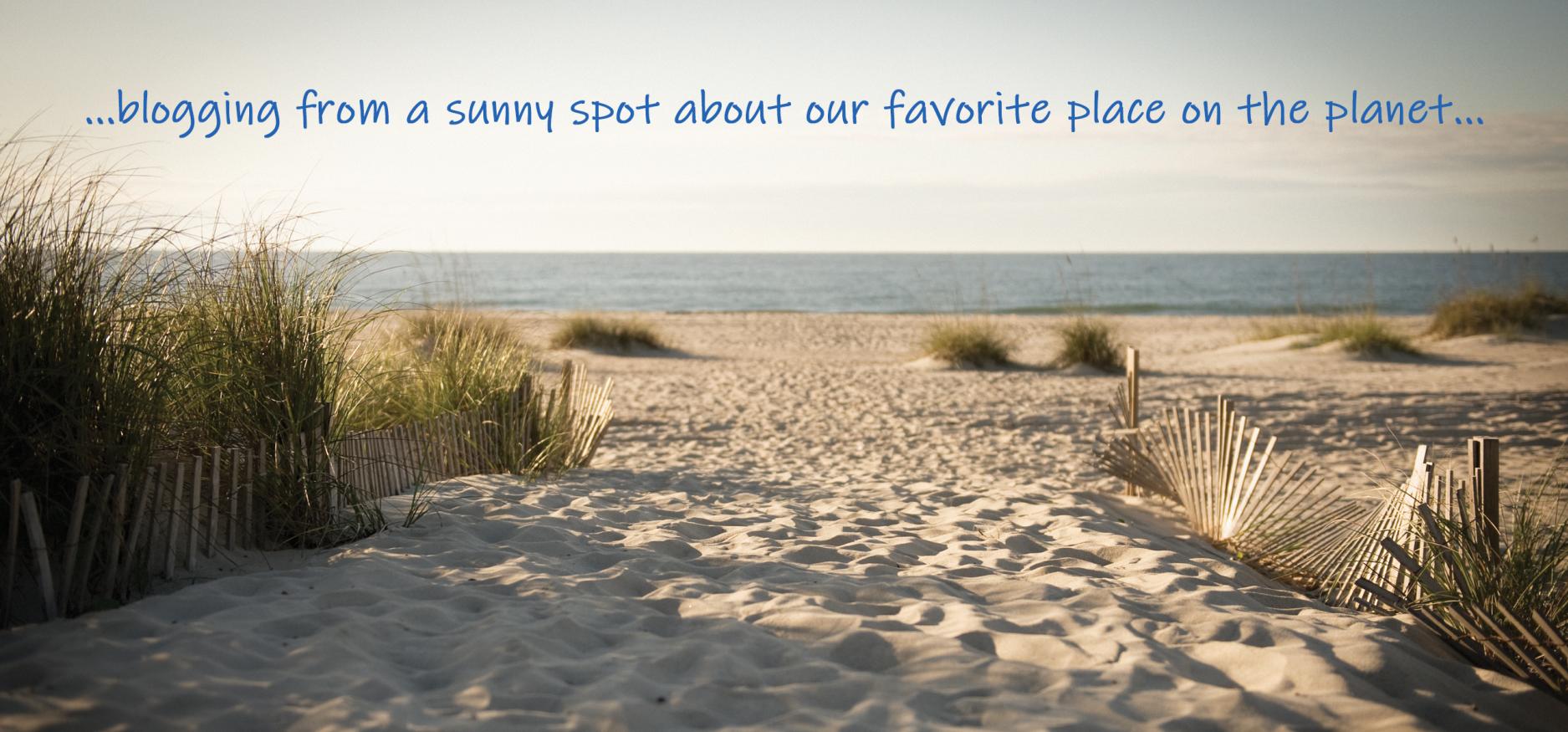North Carolina’s Brunswick Islands is a paradise for wildlife enthusiasts, offering diverse habitats ranging from sandy beaches and coastal marshes to swamps and forests. Whether you’re strolling along the shoreline, exploring a nature preserve, or kayaking through winding waterways, there’s no shortage of fascinating wildlife to discover. Here’s a look at some of the incredible creatures that call this region home, along with tips on what to do if you encounter them.
Note: Please remember to observe all wildlife from a distance. Many species in the Brunswick Islands are protected, and it is unlawful to feed and disturb them.
Coastal Wildlife
Sea Turtles
One of the most iconic species in the Brunswick Islands, sea turtles nest along our beaches from May through August. Sea turtle hatchings begin several weeks later in July and continue into October. Loggerhead turtles are the most common visitors, but Green, Kemp’s Ridley, and Leatherback turtles also make appearances. If you’re lucky, you might witness a mother turtle laying eggs or hatchlings making their way to the ocean. Remember, sea turtles are federally protected, so do not touch or disturb them and their nests. If you see an unmarked nest or a turtle in distress, contact the appropriate local sea turtle protection organization.
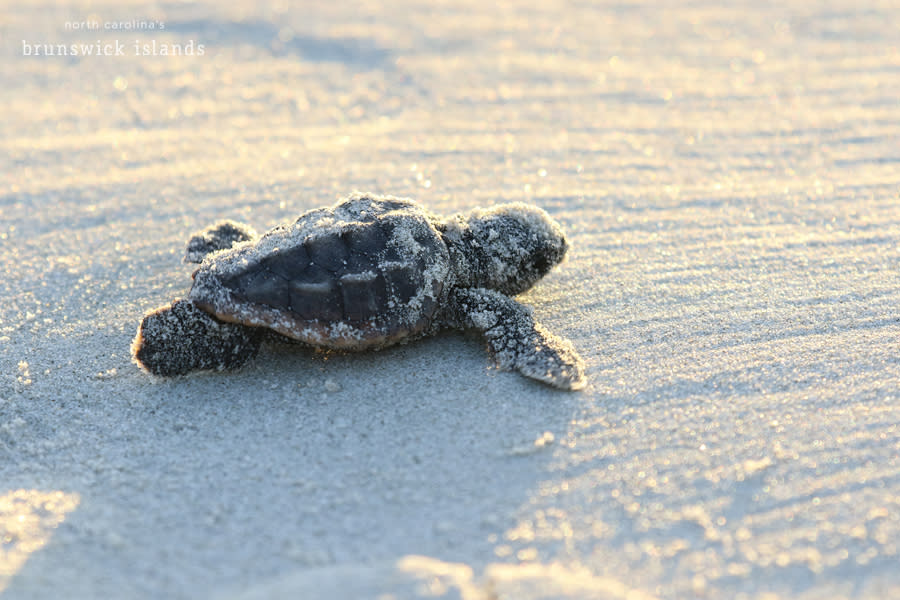
Looking to learn more about these magnificent creatures? Many local sea turtle protection organizations offer free “Turtle Talks” throughout the summer. These family-friendly events are designed for residents and visitors alike and are excellent opportunities to learn more about sea turtle conservation efforts. Find more details about upcoming “Turtle Talks” on our Events page.
Dolphins
Bottlenose dolphins are frequently spotted off the North Carolina coast, often playfully leaping through the waves. While you can catch a glimpse of them from the beach, your best chances of spotting dolphins are aboard a local charter or dolphin tour vessel thanks to the insights of area captains. Remember, while dolphins may come close to boats, it’s best to admire them from a distance and never attempt to feed them.
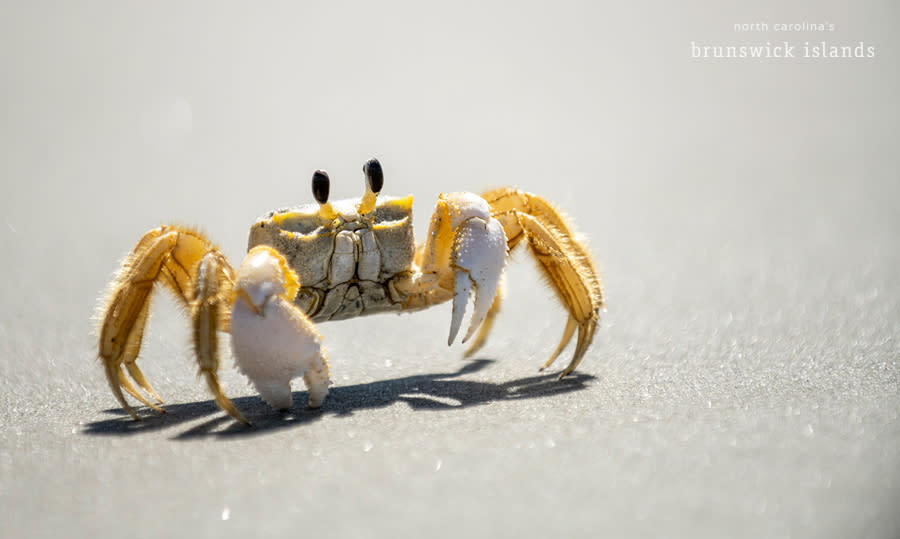
Atlantic Ghost Crabs
The Atlantic Ghost Crab is another commonly seen creature on our beach strands. Although more active at night, you may catch a flash of their bright yellow bodies as they race in and out of burrows throughout the day. Ghost crabs tend to avoid human contact, preferring instead to run away at an impressive speed of more than one meter a second! So, if you encounter one, please give it space and allow it to run freely on our beaches.
Marsh and Swamp Wildlife
Alligators
American alligators are generally shy and avoid humans, although they are most frequently seen around bodies of water on area golf courses. If you spot an alligator, please keep your distance and do not feed it; it is illegal to do so in North Carolina. These living fossils are best observed during a visit to The Swamp Park in Ocean Isle Beach where knowledgeable staff will be sure to answer all your questions about the park’s group of rescued gators.
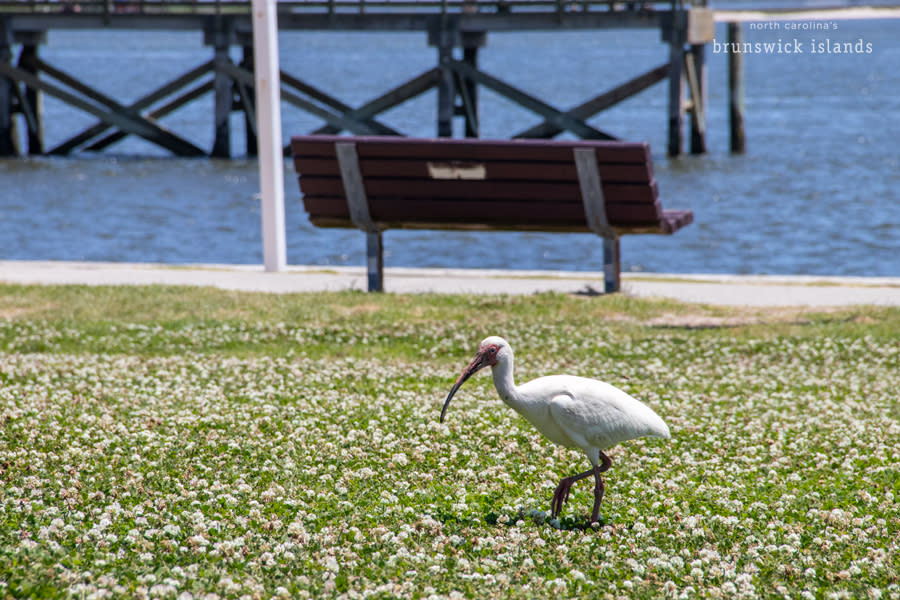
Birdwatching Hotspots
Brunswick County is a birder’s dream, with a wide variety of species found in different ecosystems:
- Southport Pier & Riverwalk: White Ibis, Glossy Ibis, Painted Bunting, raptors, and terns
- Bald Head Island Conservancy: Piping Plover, Least Tern, and wintering waterfowl
- Brunswick Town-Fort Anderson State Historic Site: Bald Eagles and Saltmarsh Sparrows
- Green Swamp Preserve: Red-cockaded Woodpeckers, Bachman’s Sparrows, and Henslow’s Sparrows
- Bird Island: Willet, Sandpipers, Black Skimmers, and Wilson’s Plovers
Shorebird nesting season runs from April through August each year. During this time, shorebirds lay their eggs directly on the sand, making the lightly colored eggs difficult to spot. Please be mindful of your footsteps and keep your pets leashed to avoid disturbing marked and unmarked nests.
Forest and Inland Wildlife
Mammals
The forests and wetlands of NC’s Brunswick Islands also provide refuge for white-tailed deer, foxes, and fox squirrels.
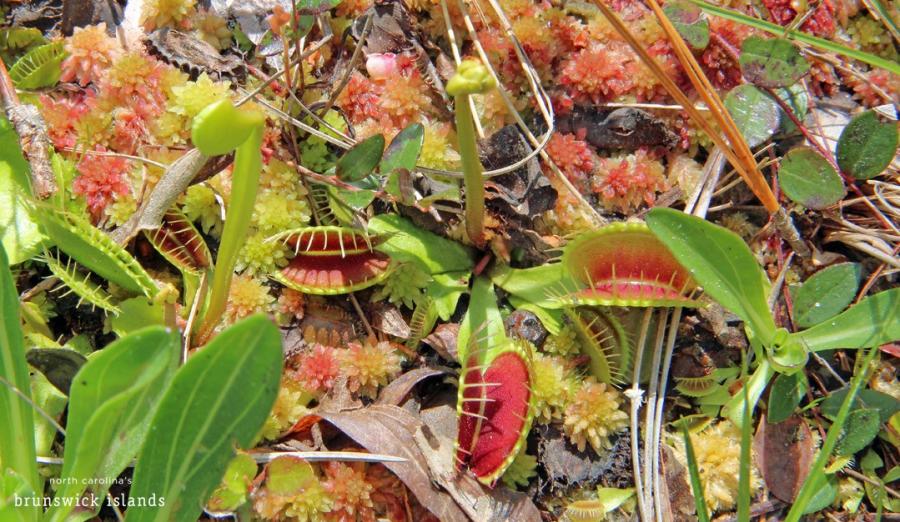
Insectivorous Plants
The Green Swamp Preserve is home to an astonishing array of carnivorous plants, including protected Venus flytraps, sundews and pitcher plants. These unique plants thrive in nutrient-poor soil by capturing and digesting insects. It is easiest to spot Venus flytraps in late spring when these low-growing plants bloom with bright white flowers, but please remember to observe them only from marked paths.
What to Do If You Encounter Wildlife
- Observe from a distance: Never approach or attempt to touch wild animals.
- Do not feed wildlife: Feeding animals disrupts their natural behaviors.
- Respect nesting areas: Stay off sand dunes and marked nesting sites to protect sea turtles and shorebirds.
- Report injured or distressed wildlife: If you see an animal in need of assistance, contact local wildlife conservation groups.
Exploring the Brunswick Islands offers an unforgettable experience for nature lovers. By respecting and protecting the incredible wildlife in this region, we can ensure these natural wonders remain for generations to come. When you are ready to start planning your wildlife adventure, please visit www.ncbrunswick.com.

